Join us as we take a closer look at 14 different species of birds of prey that you can spot in England.
England, a land where history intertwines with spellbinding landscapes, is a haven for raptors. We shall immerse ourselves in the grandeur of fifteen avian nobles, exploring their regal attires, culinary preferences, palatial abodes, and – quite importantly – where you may pay homage to them within the glorious bounds of England.
Let’s take a look at 14 different species of birds of prey that you can spot in England!
1. Barn Owl (Tyto alba)
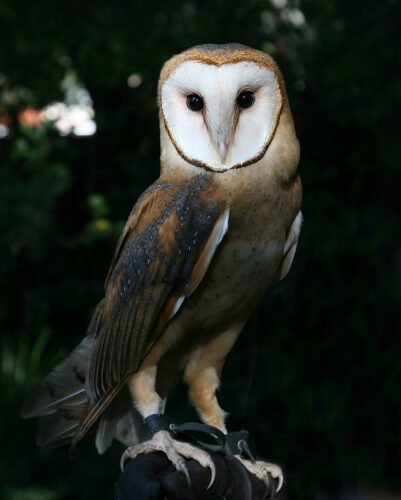
Ethereal and ghost-like, the Barn Owl dons a heart-shaped face, golden-buff back, and pure white underparts. Hunting in grasslands and meadows, they primarily feast on mice and voles. They nest in barns and old buildings. The Norfolk Broads, with its network of rivers and marshes, offers prime Barn Owl sightings.
2. Eurasian Hobby (Falco subbuteo)
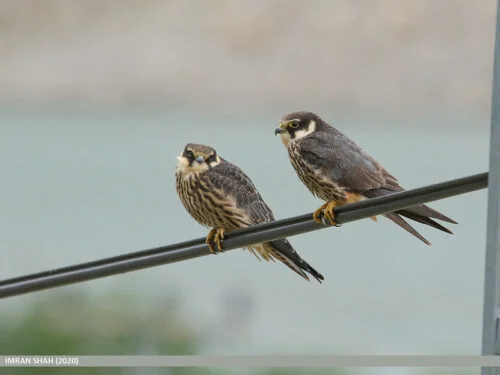
Swift as wind, the Eurasian Hobby is a sylvan acrobat. Dressed in slate grey with a red trouser, they court dragonflies and birds. Breeding in old corvid nests, their courtship features aerial food exchanges. They migrate to Africa for winter, escaping the chill. The New Forest is a tapestry where their tales are woven.
3. European Honey Buzzard (Pernis apivorus)
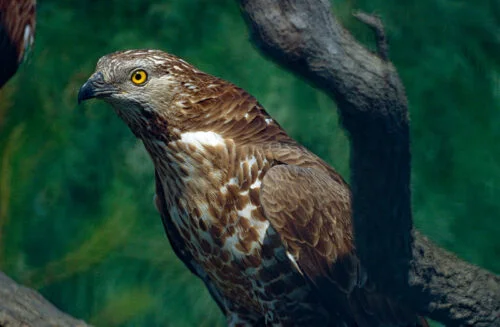
Wearing a cryptic cloak of brown and grey, the Honey Buzzard is an enigma among raptors. They use their strong bill and claws to raid the nests of wasps and bees. Nesting in woodlands, they engage in sky-dances for courtship. They migrate to Africa for the winter. The New Forest in Hampshire whispers tales of the elusive Honey Buzzard.
4. Eurasian Sparrowhawk (Accipiter nisus)
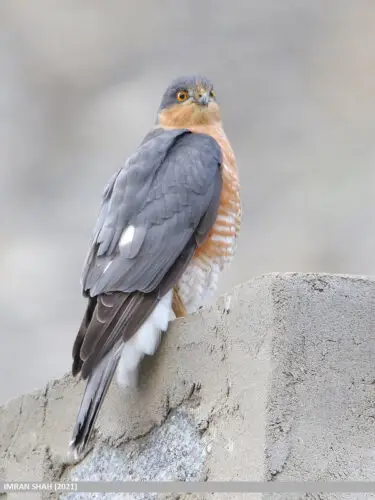
In the twilight of the woodland, the European Sparrowhawk, robed in slate grey, and cloaked in barred underparts, flits through foliage. Small birds grace their tables. Nests are built in lofty trees, and mating pairs enthrall with synchronized flights. They oft remain within their woodland realms year-round. Sherwood Forest whispers tales of their sylvan escapades.
5. European Kestrel (Falco tinnunculus)
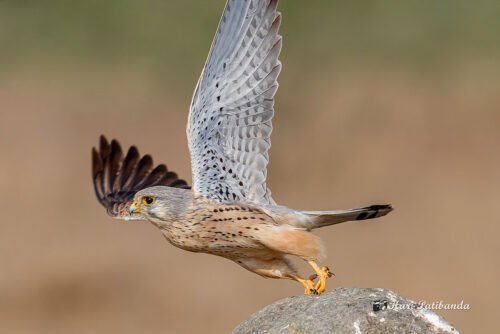
Masters of the hover, Kestrels are robed in rufous with striking dark eyespots on their head. Feasting on voles and insects, they hover above fields before diving onto their prey. They breed in cliffs and buildings and often remain in their territories year-round. The cliffs and meadows of the Peak District are where they paint the skies.
6. Hen Harrier (Circus cyaneus)
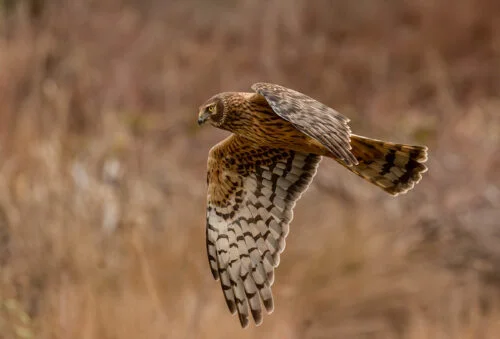
The Hen Harrier, a ghostly noble, glides over heather-clad moors. Males, grey as mist; females, a rich brown cloak. Ground-nesting birds and mammals are their prey. They nest amidst heather and grass, with a courtship of sky-dances and food-passes. In winter, they travel southward. The North Pennines sing ballads of their grace.
7. Red Kite (Milvus milvus)
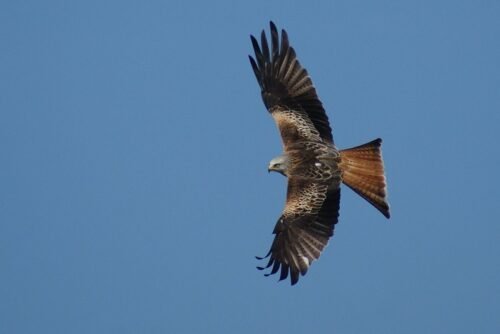
The Red Kite, bearing a coat of russet and gray, flaunts a wingspan of near 6 feet and a forked tail as a standard. Their feast hall includes carrion, earthworms, and small mammals. Breeding amid lofty trees, they perform balletic displays in courtship. A migratory sovereign, they oft journey to Iberia in winter. Pay homage in the Chilterns, where reintroduction restored their regency.
8. Tawny Owl (Strix aluco)
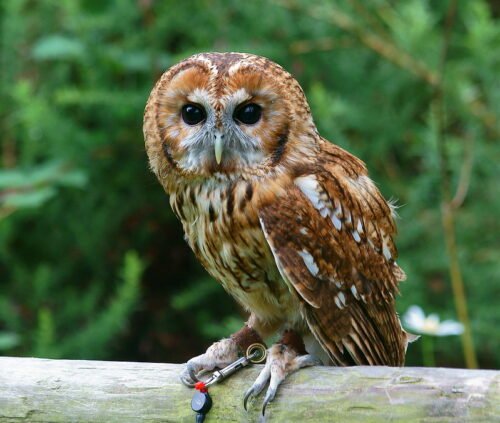
Lord of the night, the Tawny Owl, is robed in rich brown with a rounded head and black eyes. Their diet consists of rodents, which they catch during their nocturnal forays. They nest in tree hollows and are mostly sedentary throughout the year. The ancient woodlands of the Forest of Dean in Gloucestershire are where you can hear their haunting calls.
9. Common Buzzard (Buteo buteo)
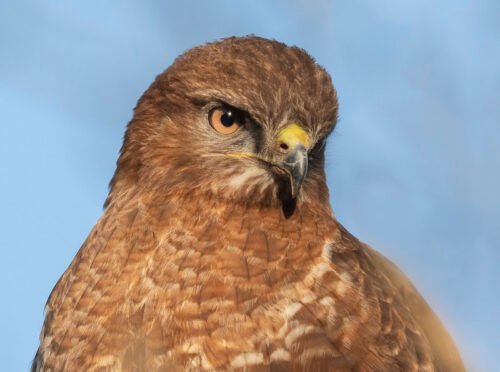
With a domineering cry, the Common Buzzard emerges, a tapestry of browns and regal wings. Feasting on small mammals, birds, and carrion, they hold dominion over woodlands and meadows. Monogamous, their courtship is a spectacle of aerial displays. Dartmoor’s timeless expanses provide the backdrop for their noble pursuits.
10. Peregrine Falcon (Falco peregrinus)
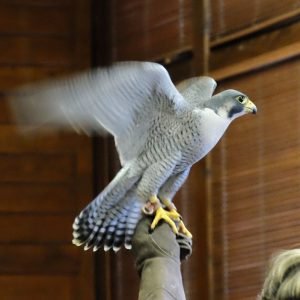
Behold the Peregrine Falcon, falconry’s crowned jewel. Clad in blue-gray mantle, with a dark hood and regal yellow beak, their kingdom lies wherever birds flutter. With precipitous cliffs for nesting, they perform nuptial flights of breathtaking dives. Some Peregrines are migratory while others maintain their noble estates year-round. The regal cliffs of Dover are their ancestral keep.
11. Northern Goshawk (Accipiter gentilis)
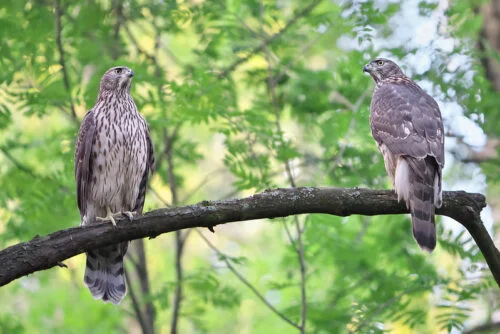
Venture into the dense woodland, and behold the Goshawk – a fierce and agile hunter. Robed in slate grey with striking orange eyes, this raptor favors woodland and forests. Their feasts include birds and mammals. Goshawks build nests high in trees and engage in aerial displays of prowess during courtship. The ancient Forest of Dean in Gloucestershire is where whispers of Goshawks rustle through the leaves.
12. Merlin (Falco columbarius)
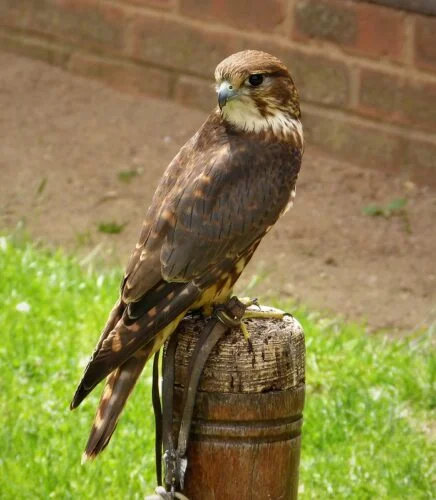
The Merlin, a pint-sized noble with a fierce heart, is an avian knight of the moorlands. Males bear a blue-grey back with a streaked white belly, while females don a brown plumage. Feasting on small birds, their hunting style is a swift, low flight. These solitary nesters migrate to the lowlands during winter. The North York Moors are where their chivalrous tales come to life.
13. Osprey (Pandion haliaetus)
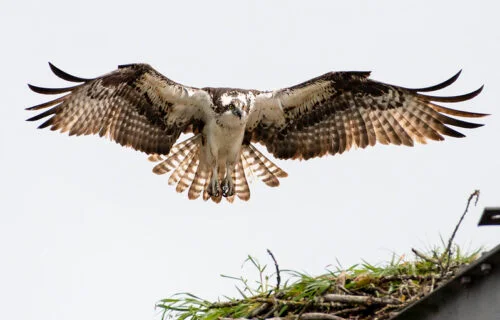
A fisher of dreams, the Osprey reigns over lakes and rivers. A dark mask, white underparts, and mighty wings define them. Fish are their sole sustenance. They build nests atop trees and poles. Migrating to Africa for winter, they return to breed. Rutland Water, with osprey platforms, heralds their august presence.
14. Golden Eagle (Aquila chrysaetos)
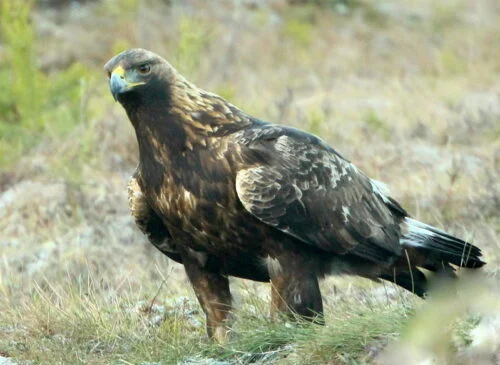
With a crown of golden nape, the Golden Eagle surveys its domain. Their banquet includes rabbits, hares, and grouse. They build eyries upon crags and cliffs. Some travel to the Scottish Highlands for winter, whilst others remain. Seek them in the Lake District, where mountains are their thrones.
